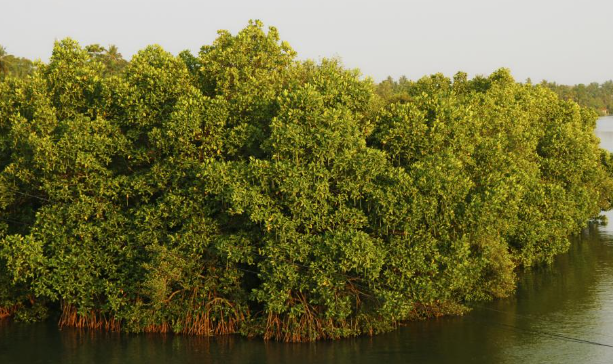Mangroves in South India, Sri Lanka Labeled ‘Critically Endangered
Coastal mangroves in Tamil Nadu, Sri Lanka, and the Maldives were recently rated as “critically endangered” by the International Union for Nature Conservation (IUCN). According to the IUCN’s first global assessment of mangrove ecosystems, this scary classification shows that these places have a lot of problems that need to be fixed for conservation reasons.
Details of the IUCN Assessment
The IUCN study, which came out on May 22, looks at mangroves from 36 different places around the world, including tropical, subtropical, and some warm temperate coasts. In particular, parts of South India, Sri Lanka, the Maldives, and the warm, temperate northwest Atlantic have been named as severely endangered. Some places in South India were looked at, like Muthupet in Thiruvarur district, Ramanathapuram, and parts of southern Kerala.
Importance of Mangrove Ecosystems
Mangroves are very important for protecting biodiversity, giving local people important goods and services, and reducing the effects of climate change. Protecting the coast, fishing, and keeping the water clean depend on these habitats. Losing mangrove areas is bad for both the environment and the people who live in places that depend on them.
Conservation Efforts in Tamil Nadu
The situation in Tamil Nadu looks better, even though the forecast is not good. For example, in Tamil Nadu, the area of mangroves has grown from 23 square kilometres in 2001 to 45 square kilometres in 2021, according to the Indian State of Forest Report. Forming 20 village mangrove groups was an initiative by the state to get local people involved in conservation efforts and encourage ownership and long-term use of mangrove resources. Scientists use the groups to make sure that mangrove areas get enough freshwater and that scientific management is carried out properly.
Restoration Initiatives
After the Gaja Cyclone caused damage, a lot of work is being done to fix things up. The Tamil Nadu Coastal Restoration Mission, which is backed by the World Bank, has restored about 25 square kilometres of mangroves in several districts. They have plans to restore another 15 square kilometres as well. The goal of these projects is to bring life back to the mangrove environments and make them better able to support wildlife and people in the area. This organized approach to conservation shows that people are becoming more aware of how important it is for communities to be involved and for science management to protect important ecosystems like mangroves as environmental problems get worse.
Month: Current Affairs - May, 2024
Category: Environment Current Affairs







